 W
WThe Canadian Armed Forces, or Canadian Forces, are the unified armed forces of Canada, as constituted by the National Defence Act, which states: "The Canadian Forces are the armed forces of Her Majesty raised by Canada and consist of one Service called the Canadian Armed Forces."
 W
W32 Signal Regiment is a Canadian Army primary reserve unit, part of the Royal Canadian Corps of Signals. It is the dedicated signals unit within 32 Canadian Brigade Group.
 W
W403 "City of Calgary" (Helicopter) Operational Training Squadron is a squadron of the Royal Canadian Air Force (RCAF) located at Canadian Forces Base Gagetown. It is equipped with CH-146 Griffons and provides operational aircrew training to the crews who will fly the helicopter. The squadron also conducts operational test and evaluation, develops aviation tactics and carries out operations in support of the 1 Wing mission. It also supports the local Army requirements of the Combat Training Centre. It was founded as No. 403 Squadron RCAF.
 W
W426 Transport Training Squadron is a unit of the Canadian Forces under Royal Canadian Air Force, located at CFB Trenton in Trenton, Ontario. It originated as a squadron in the Royal Canadian Air Force (RCAF) that fought during the Second World War as a bomber squadron.
 W
W450 Tactical Helicopter Squadron is a Royal Canadian Air Force helicopter squadron. During the Second World War, the numerical designation of 450 was originally given to No. 450 Squadron of the Royal Australian Air Force, which flew under that number from 1941 until 1945 in the Middle East and Italy. Canadian Article XV squadrons during the Second World War had used numbers from 400 to 449; however, due to an administrative error, the "450" designation was used when squadron formed at RCAF Station St. Hubert, Quebec, on March 29, 1968.
 W
WThe 2011 Lake Champlain and Richelieu River floods were a series of water level increases that began at the end of April 2011 and caused a subsequent overflow of the Richelieu River in Canada and Lake Champlain in the United States. The flooding occurred due to record snowfall in the area followed by its snowmelt and in combination with intense spring rains. Lake Champlain stayed at flood stage for 67 days from April to June, and on May 10, 2011, the lake broke its previous flood level set in 1869 by reaching 102.8 ft. at Rouses Point, New York. The floods affected about 3,000 homes in Montérégie and caused an estimated six million U.S. dollars of damage in seven counties in the northern area of Vermont. The damage was so bad that a state of emergency was declared by Vermont on May 5, 2011. Similar damage was reported in New York State.
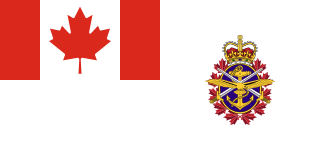 W
WThe following is a list of the notable authorized marches for various organisations of the Canadian Armed Forces. The first march listed is the march most commonly performed for that organisation on parade; it is commonly referred to simply as that organisation's "march" or "march past". In addition, many organisations also have additional pieces for slow marches, marches for mounted parades, pipe marches, etc.; they are subsequently listed and footnoted as applicable.
 W
WCamp Hughes was a Canadian military training camp, located in the Municipality of North Cypress – Langford west of the town of Carberry in Manitoba, Canada. It was actively used for Army training from 1909 to 1934 and as a communications station from the early 1960s until 1991.
 W
WThe Canadian Armed Forces Tattoo 1967 was a series of military tattoos or displays performed by members of the Canadian military portraying more than three hundred years of Canada's military history. The Tattoo, which was the Canadian military's contribution to Canada's centennial year celebrations in 1967, toured the country from coast to coast. This was the largest such event in the history of the Canadian military.
 W
WThe Canadian Army is the command responsible for the operational readiness of the conventional ground forces of the Canadian Armed Forces. As of 2020, the Canadian Army has 23,000 regular soldiers, 19,000 reserve soldiers, for a total of 42,000 soldiers. The Army is also supported by 3,000 civilian employees from the civil service. It maintains regular forces units at bases across Canada, and is also responsible for the Army Reserve, the largest component of the Primary Reserve. The Commander of the Canadian Army and Chief of the Army Staff is Lieutenant-General Wayne Eyre.
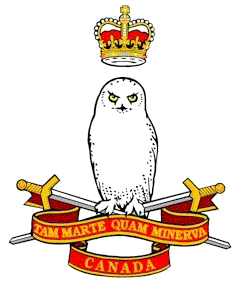 W
WThe Canadian Army Command and Staff College (CACSC), formerly the Canadian Land Force Command and Staff College, is a school for officers of the Canadian Forces, specializing in staff and army operations courses. It is located at Fort Frontenac, in Kingston, Ontario, Canada.
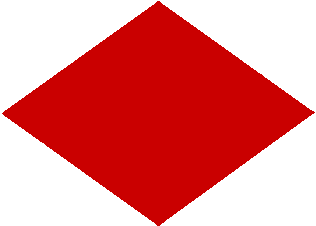 W
WThe Canadian Army Doctrine and Training Centre (CADTC), formerly the Land Force Doctrine and Training System (LFDTS), is a formation of the Canadian Army headquartered at McNaughton Barracks, CFB Kingston, Ontario. CADTC is the organization that is responsible for delivering army training and developing army doctrine. Approximately 3,200 officers and soldiers are assigned to CADTC. The organization was renamed on 18 July 2013 as part of the reorganization of the Canadian Army.
 W
WThe Canadian Defence Academy ("CDA") is an organization located within the Canadian Forces created in 2000. The academy is situated within the Military Personnel Command. CDA is comprised several training institutes such as the Royal Military College of Canada, Canadian Forces College and the Royal Military College Saint-Jean.
 W
WThe Canadian Forces College (CFC) is a military school for senior and general officers of the Canadian Forces. The college provides graduate-level military education courses meant to enable officers to effectively provide leadership within the Canadian Forces in a whole-of-government framework.
 W
WThe Canadian Forces Exchange System or CANEX, is a commercial service of the Canadian Forces Morale and Welfare Services. First established in 1968, it is tasked with supporting the Canadian Forces (CF) operational effectiveness, contributing to morale, esprit de corps and unit cohesion. CANEX operates merchandising operations and provides CF members with Advantage Programs at CF bases, wings and units throughout Canada. In Europe, similar facilities (NATEX) are operated in Germany for NATO.
 W
WThe Canadian Forces Health Services Group is a formation of the Canadian Forces within the Military Personnel Command. It includes personnel from both the Royal Canadian Medical Service and the Royal Canadian Dental Corps, fulfills all military health system functions from education and clinical services to research and public health, and is composed of health professionals from over 40 occupations and specialties in over 120 units and detachments across Canada and abroad.
 W
WThe Canadian Armed Forces Small Arms Concentration (CAFSAC) and the Canadian Army Skill At Arms Meeting (CASAM) are a series of shooting matches conducted annually by the Canadian Forces at the Connaught Ranges and Primary Training Centre, located near Shirley's Bay in Ottawa, Ontario. The matches are preceded by the Dominion of Canada Rifle Association (DCRA) National Service Arms Competition, also conducted annually at Connaught Ranges, and are the latest iteration of a series of Canadian shooting competitions dating back to 1869.
 W
WThe Canadian Joint Incident Response Unit (CJIRU) of the Canadian Armed Forces was created "to provide timely and agile broad-based CBRN support to the Government of Canada in order to prevent, control and mitigate CBRN threats to Canada, Canadians, and Canadian interests". It is a sub-unit of the Canadian Special Operations Forces Command (CANSOFCOM).
 W
WThe Canadian Manoeuvre Training Centre (CMTC) is the Canadian Army's functional centre of excellence (FCoE) for collective training (CT) and is the army CT training authority on behalf of its higher headquarters, the Canadian Army Doctrine and Training Centre (CADTC). It is housed by 3rd Canadian Division Support Base Detachment Wainwright, in Denwood, Alberta.
 W
WThe Canadian Siberian Expeditionary Force was a Canadian military force sent to Vladivostok, Russia, during the Russian Revolution to bolster the allied presence, oppose the Bolshevik Revolution and attempt to keep Russia in the fight against Germany. Composed of 4,192 soldiers and authorised in August 1918, the force returned to Canada between April and June 1919. The force was commanded by Major General James H. Elmsley. During this time, the C.S.E.F. saw little fighting, with fewer than 100 troops proceeding "up country" to Omsk, to serve as administrative staff for 1,500 British troops aiding the anti-Bolshevik White Russian government of Admiral Alexander Kolchak. Most Canadians remained in Vladivostok, undertaking routine drill and policing duties in the volatile port city.
 W
WThe Central Band of the Canadian Armed Forces is one of six full-time Regular Force military bands in the Canadian Armed Forces. It is also the seniormost military band in the CAF. The band provides professional musical support for the representative institutions of the Canadian Forces, supporting the Department of National Defence and the Government of Canada in events throughout the National Capital Region.
 W
WThe Chief of the Defence Staff is the second most senior member of the Canadian Armed Forces and heads the Armed Forces Council, having primary responsibility for command, control, and administration of the forces, as well as military strategy, plans, and requirements. The position is held by a senior member of one of the three main branches of the Canadian Armed Forces. The current CDS, since 17 July 2015, is Jonathan Vance.
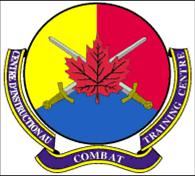 W
WThe Combat Training Centre headquartered at 5 Canadian Division Support Base Gagetown, New Brunswick, and with schools at Gagetown and at CFB Kingston, 8 Wing Trenton and CFB Borden in Ontario, is responsible for individual training for Canadian Army soldiers and officers in military occupational classifications that are controlled by the Canadian Army. Originally known as the Combat Arms School, it was formed at Camp Borden, Ontario, in 1965, moving to CFB Gagetown in the early 1970s. It is a formation of the Canadian Army Doctrine and Training Centre, the former Land Force Doctrine and Training System which was renamed as part of the reorganization of the Canadian Army on 18 July 2013.
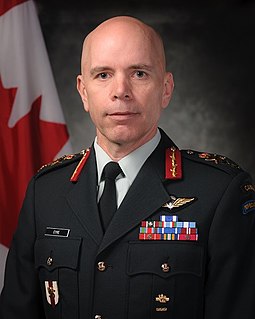 W
WThe Commander of the Canadian Army is the institutional head of the Canadian Army. This appointment also includes the title Chief of the Army Staff and is based at National Defence Headquarters in Ottawa, Ontario.
 W
WThe Commander of the Royal Canadian Air Force is the institutional head of the Royal Canadian Air Force. This appointment also includes the title Chief of the Air Force Staff and is based at National Defence Headquarters in Ottawa, Ontario.
 W
WThe Communications and Electronics Branch is a personnel branch of the Canadian Forces (CF). The army component of the branch is designated the Royal Canadian Corps of Signals.
 W
WThe Legal Branch is a personnel branch of the Canadian Armed Forces (CAF). It primarily deals with the Canadian Forces' legal affairs. Legal officers are primarily accepted through the Direct-Entry Training Program, and must have a degree in law as well as be a member of a Canadian provincial or territorial bar. However, the CAF also selects a few currently serving members each year to attend law school and join the Legal Branch through the Military Legal Training Plan.
 W
WThis is a list of Royal Military College of Canada memorials and traditions.
 W
WA loyal toast is a salute given to the head of state of the country in which a formal gathering is being given, or by expatriates of that country, whether or not the particular head of state is present. It is usually a matter of protocol at state and military occasions, and a display of patriotic sentiment at civilian events. The toast is usually initiated and recited by the host before being repeated by the assembled guests in unison; the composition varying between regions and types of gathering. There is sometimes a tradition of smashing a glass used for a loyal toast, so that no lesser toast can be made with it.
 W
WThe Music Branch is a personnel branch of the Canadian Armed Forces (CAF). It is primarily composed of band musicians, and also deals with the selection and musical training of its recruits. The branch encompasses all the military bands in service in the Canadian Armed Forces. It is roughly the equivalent to the Corps of Army Music (CAMUS) in the British Army.
 W
WOperation Hestia is the name of the Canadian Forces humanitarian response to the 2010 Haiti earthquake which struck Haiti on 12 January 2010. Operation Hestia is the military component of an interagency response that also involves Foreign Affairs and International Trade Canada (DFAIT) and the Canadian International Development Agency (CIDA). The headquarters for Operation Hestia were established in the city of Jacmel.
 W
WThe Primary Reserve of the Canadian Armed Forces is the first and largest of the four sub-components of the Canadian Forces reserves, followed by the Supplementary Reserve, the Canadian Rangers, and the Cadet Organizations Administration and Training Service.
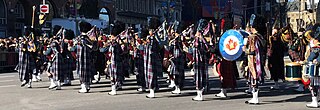 W
WThe Royal Canadian Air Force Pipes and Drums (RCAFPD) is a military pipe band unit composed of current members of the Royal Canadian Air Force. The unit was formally established in October 1949 and is the longest continuous serving Air Force Pipe Band in the Canadian Forces. All of its 40 members are volunteers who are drawn from both the military and civilian sphere. At the time of its foundation, it was known as the RCAF Station Rockcliffe Pipe Band.
 W
WThe Royal Canadian Chaplain Service is a personnel branch of the Canadian Armed Forces that has approximately 192 Regular Force chaplains and 145 Reserve Force chaplains representing the Christian, Muslim and Jewish faiths. From 1969 to 2014 it was named the Chaplain Branch. It was renamed on October 16, 2014.
 W
WThe Royal Canadian Military Institute (RCMI) is a private members’ organization located in Toronto, Ontario, Canada. It was founded as the Canadian Military Institute on January 14, 1890. General Sir William Dillon Otter set the founding principles: "to provide in an Institute for the defence forces of Canada a Library, museum and club for the purposes of the promotion of military art, science and literature, to gather and preserve the records of the defence forces, and develop its specialized field in Canadian history." The motto of the RCMI is Fidelis Per Manere.
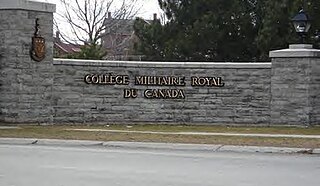 W
WThe Royal Military College of Canada, commonly abbreviated as RMC, is the military college of the Canadian Armed Forces, and is a degree-granting university training military officers. RMC was established in 1876 and is the only federal institution in Canada with degree-granting powers. The Royal Military College of Canada Degrees Act, 1959 empowers the college to confer degrees in arts, science, and engineering. Programs are offered at the undergraduate and graduate levels, both on campus as well as through the college's distance learning programme via the Division of Continuing Studies.
 W
WThe Royal Military College Saint-Jean, commonly referred to as RMC Saint-Jean, is a Canadian military college. It is located on the historical site of Fort Saint-Jean, in Saint-Jean-sur-Richelieu, Quebec, 40 km south of Montreal. RMC Saint-Jean is an arm of the Canadian Military College (CMC) system that provides two college-level programs in Social Science and Science, which are closely integrated with the undergraduate programs offered by the Royal Military College of Canada, and the International Studies undergraduate program delivered by RMC Saint-Jean.
 W
WThe Royal Regiment of Canadian Artillery is the artillery personnel branch of the Canadian Army.
 W
WCanadian Armed Forces Search and Rescue (CAFSAR) is the collective name used to refer to search and rescue (SAR) resources and operations within the Canadian Armed Forces. CAFSAR is currently the responsibility of the Royal Canadian Air Force (RCAF).
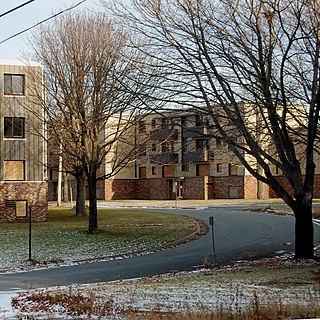 W
WShannon Park is an urban neighbourhood and former national defence site in the north end of Dartmouth on the eastern shore of Halifax Harbour in the Halifax Regional Municipality (HRM) in Nova Scotia, Canada. It is immediately south of the A. Murray MacKay Bridge in the community of Dartmouth. It straddles Highway 111, a CN Rail freight line, and Halifax Harbour. It is bordered on the south by Tuft's Cove.
 W
WThe history and development of tanks in the Royal Canadian Armoured Corps can be broken down into smaller categories: their origin during World War I; the interwar period; World War II; the Cold War; and the modern era.
 W
WThe Vice Chief of the Defence Staff is the third most senior member of the Canadian Armed Forces, reporting to the Chief of the Defence Staff (CDS) as well as the Deputy Minister of National Defence. The Directorate General Executive Coordination, the Canadian Forces Provost Marshal, the National Cadet and Junior Canadian Rangers Support Group and several other departments report to the VCDS, who is appointed by the CDS.
 W
WWallis Heights is a Canadian urban neighbourhood in Nova Scotia's Halifax Regional Municipality.
 W
W W
W W
W W
W W
W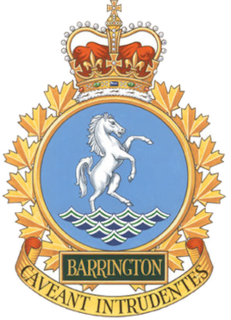 W
W W
W W
W W
W W
W